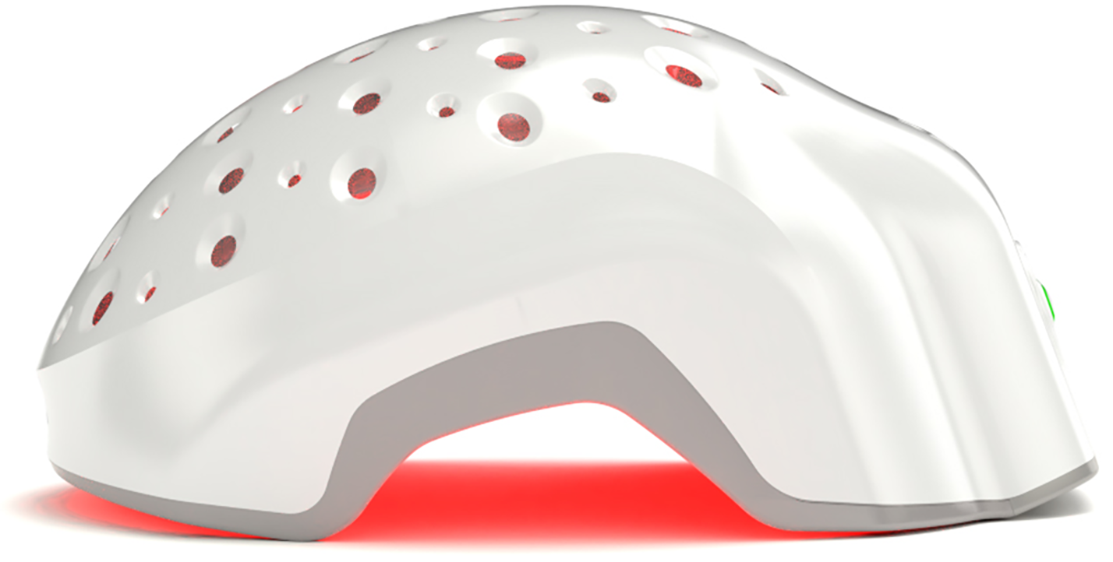Hair loss doesn’t wait for you to settle down, have kids, or finish grad school. For some, it starts creeping in before they’ve even graduated. For others, it politely holds off until their 40s, then pulls a full surprise. So when people ask, what age does hair loss start—they’re not being paranoid. They’re already noticing the early signs. And if you've ever Googled “when do men start balding?”, you’re definitely not alone.
The truth is, hair loss has no fixed schedule. It’s a mix of genetics, hormones, lifestyle chaos, and sometimes even your shampoo. This blog lays it all out: what the real age-related triggers are, how the hair growth cycle plays into it, and why acting early beats wishful thinking every single time.
Understanding the Hair Growth Cycle
Hair doesn’t just grow and go. It follows a strict, science-backed growth cycle with three phases: anagen (growth), catagen (transition), and telogen (rest/shedding). At any point, around 85–90% of your strands should be in the growth phase. But when that balance shifts—whether from stress, hormones, or plain bad luck—shedding increases, regrowth slows, and boom: thinning.
Disruptions in this cycle don’t wait for a birthday to strike. Whether you’re 18 or 48, once the follicle function goes sideways, you start seeing what no one wants to admit—hair loss that’s not “just a bad hair day.”
Also Read: Does hair growth slow down with age?
Average Age for Hair Loss
For Men
The average age of hair loss in men is somewhere between the late 20s and early 30s. But by age 35, nearly two-thirds of men will already see noticeable hair thinning. That’s not balding “one day.” That’s balding now. The primary culprit is androgenetic alopecia, also known as male pattern baldness. This genetic condition doesn’t care how expensive your shampoo is—it cares about DHT sensitivity and hair miniaturization that marches across your temples and crown without apology.
For Women
Women usually get a few extra years of hair peace. Most start seeing hair thinning in their 40s during perimenopause into their 50s with full on menopause and beyond, when estrogen dips and androgen levels fluctuate. The result isn’t a receding hairline but more of an all-over density drop. Volume loss. Wider part lines. More visibility of the scalp. While it’s subtler than male pattern baldness, female pattern hair loss can still pack a confidence-sapping punch.
Early-Onset Cases
Yes, balding in teens is a real thing. Thanks to genetics, some people start noticing the first signs of male hair loss before they even hit 21. It’s called early onset androgenetic alopecia, and while rare, it’s not unheard of—especially in families with aggressive hair loss histories. When your hairline starts backing up before your student loans do, that’s not a coincidence. That’s your DNA clocking in early.
Age-Specific Hair Loss Patterns
In Your 20s
The 20s are supposed to be for experimenting with bad haircuts, not losing hair altogether. Yet signs of balding at 20—like temple thinning and widow’s peaks creeping in—are more common than you think. Stress, poor nutrition, over-styling, and yes, genetics, all collide here. If your dad lost his hair before 30, your scalp might already be taking notes. You may still be in peak anagen phase, but follicle miniaturization could already be sneaking in behind the scenes.
In Your 30s–40s
Welcome to the great hair reality check. In this phase, hair loss in 30s men is often progressive and hard to ignore. That mild recession becomes a full-blown M-shaped hairline. For women, hormones, childbirth, and cumulative damage from heat styling or diet start showing up in the mirror. Lifestyle factors like poor sleep, alcohol, chronic stress, and micronutrient gaps only add fuel to the follicle fire. This is when most people stop shrugging it off—and start Googling solutions.
50+
At this point, hair loss is inevitable, your follicles are officially less responsive. Hair thinning age in men and women over 50 is real, and so is reduced scalp circulation, slowed cell turnover, and the long-term effects of not treating earlier stages. This is where untreated miniaturization turns into visible balding. The scalp gets shinier, hair gets finer, and regrowth—if it happens at all—takes longer. That doesn’t mean it’s too late. But it does mean you’re now playing defense, not offense.
What Causes Hair Loss at Different Ages?
The age might change, but the reasons behind hair loss often come down to a brutal mix of internal and external pressures.
Genetics
Genetic hair loss age is wildly unpredictable. If androgenetic alopecia runs in your family, you can start seeing a retreating hairline post-puberty. This isn’t just “inherited.” It’s encoded. Your follicles respond to DHT differently than someone else’s, and once they start miniaturizing, they rarely stop without intervention. This type of hair loss follows a clear pattern—and it’s one you’ll want to track early.
Hormonal Changes
Hormones are fickle little troublemakers. For men, imbalances in testosterone and DHT drive pattern baldness. For women, hormonal swings during pregnancy, postpartum, perimenopause, and thyroid issues can throw the hair cycle completely off. And because estrogen supports hair growth, once it drops, so can your density. The more fluctuation, the more fallout.
Stress and Lifestyle
Stress-induced hair loss isn’t just “in your head.” It’s in your cortisol levels, your sleep cycle, and your nutritional deficiencies. Chronic stress can lead to telogen effluvium—a condition where hair prematurely shifts into the shedding phase. Combine that with lack of sleep, poor diet, smoking, or crash dieting, and your follicles can’t keep up. They're too busy trying not to die.
Health Conditions and Medications
PCOS, autoimmune disorders like alopecia areata, anemia, and even long COVID are just a few culprits. Add medications like chemotherapy, antidepressants, or blood pressure meds to the mix, and your scalp becomes collateral damage. Some hair will regrow post-treatment—but not always to previous volume or thickness levels. And let’s not forget surgery. Yes, post-surgical hair loss is real, and so is the shedding triggered by general anesthesia. The body diverts energy toward healing wounds and recovering from trauma, and your follicles temporarily lose priority. It’s called telogen effluvium, and it’s not picky—any major physical stressor, including surgery, can kick it off.
Early Signs of Hair Loss to Watch Out For
Receding hairline, especially at the temples
- Wider part lines
- Less hair volume overall
- Hair that feels finer or more brittle
- Increased shedding in the shower or on your pillow
- Miniaturized hairs (shorter, thinner, wispy) replacing normal strands
Ignore these signs, and you risk entering the irreversible zone.
How to Know If Your Hair Loss is Normal or a Concern
Shedding 50–100 hairs a day is normal. Shedding more than that consistently—or noticing obvious scalp exposure, inflammation, or sudden texture changes? That’s not “just shedding.” That’s your body trying to flag you down before things get worse. See a dermatologist or trichologist (hair and scalp expert) and stop guessing.
Read this article to know if your hair loss is normal.
Can You Prevent or Slow Down Hair Loss?
Yes, but only if you stop treating it like an afterthought. Hair loss is a progressive condition—and the longer you wait, the less there is to save.
Early Intervention
The sooner you act, the more follicles you retain. Whether it’s minoxidil, laser phototherapy or low-level light therapy, scalp microneedling, or a mix of proven tools, early-stage hair loss is far more manageable than advanced thinning. Don’t wait for “after the holidays” or “when it gets worse.” By then, it already is.
Healthy Hair Habits
Nutrient-rich diet is non-negotiable. Stress management is crucial. Ditch the tight hairstyles, harsh heat tools, and chemical-laced shampoos. Sleep well. Massage your scalp. Support your follicles like they’re actually part of your body—because they are.
Advanced Treatments
For those who want real firepower, look at FDA-cleared options:
-
Minoxidil: Proven topical for density and regrowth support
-
Finasteride: Oral DHT blocker (for men, mainly)
-
Laser Phototherapy/Low-Level Light Therapy: Clinically backed for both men and women
-
PRP (Platelet-Rich Plasma): Uses your blood’s growth factors to stimulate dormant follicles
Talk to a pro before starting, but don't stall.
Conclusion
Hair loss doesn’t wait for a milestone birthday or a convenient window in your life. It starts when it wants—and often before you even notice. Whether you're spotting the first signs of male hair loss in your 20s, or dealing with density drop in your 50s, the earlier you act, the better your outcome. Genetics might load the gun, but lifestyle pulls the trigger. Don’t wait for the scalp to get shiny. Start paying attention. Then take control.
If you are looking for an effective and easy way to regrow your hair, you can try laser therapy devices like the Theradome Laser Helmet. These devices are clinically tested and use low-level laser light to gently stimulate your hair follicles. You can see noticeable hair growth within 4-6 months. However, you need to use it consistently for several months.






















